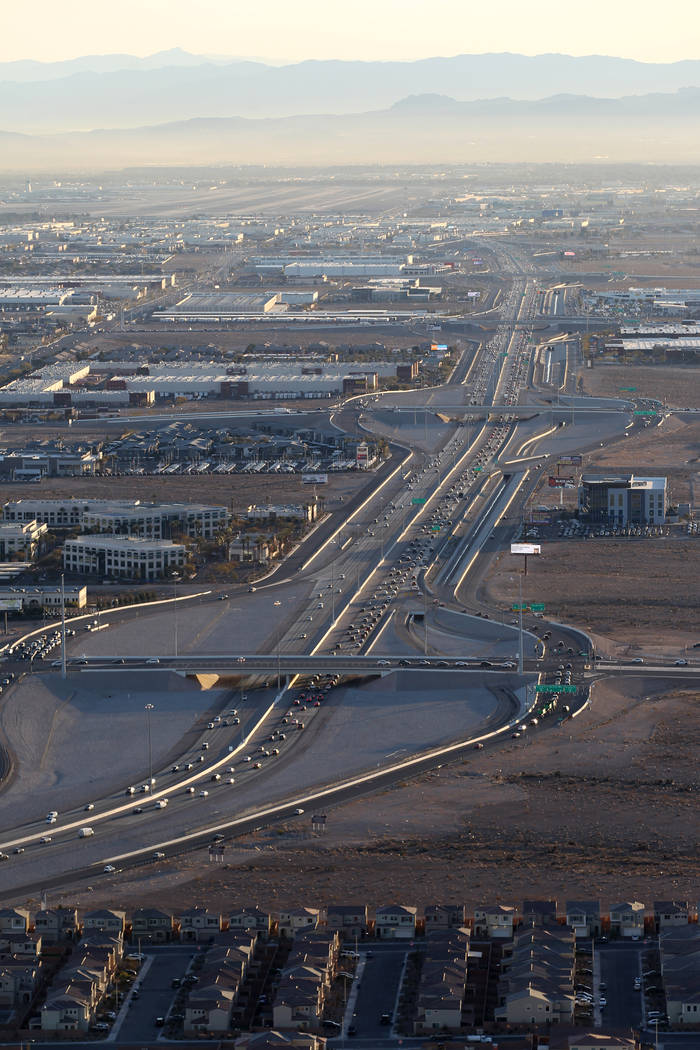Tim Burke: You must commute to Las Vegas for high-paying jobs
I have been making the daily commute to Las Vegas the last several weeks to teach a class at one of the Las Vegas Metropolitan Police Department locations.
Leaving at 6:30 a.m, I join the lineup of cars with other Pahrump residents heading off to work in Las Vegas. Each evening I return with the same procession to home. It is not just a few cars but a steady stream leaving the rural countryside to earn their paychecks in the growing megalopolis.
The commute is generally easy and calm until you reach the Durango and Blue Diamond intersection, unless someone decides to drive recklessly through the Mountain Springs area and causes an accident. When that happens, the road can be shut down for hours requiring a long detour through Sandy Valley or going north on U.S. Highway 95 to the Nevada Highway 160.
Why do a considerable number of Pahrump wage earners drive five days a week up to an hour and a half each way to go to work? The answer is simple. There are very few jobs in Pahrump that pay anything remotely close to what you can earn in Las Vegas.
Six-figure salaries are virtually non-existent in Pahrump, but they do exist in Las Vegas. Management positions at any of the major casino properties pay that, plus bonuses and benefits. Many other industries there have high-paying salaries and with the growth that Las Vegas is going to have over the next several years, demand for good employees is going to drive those wages even higher.
Pahrump, not so much. Even jobs at the halfway mark to six figures, $50,000, are difficult to find here. There is no real industry and there is no infrastructure in place that would bring industry here. No major roads, no rail, no natural gas, and no airport.
Reno was able to rebound when the gaming industry lost market share due to the proliferation of Indian casinos by establishing a major warehousing industry and tech centers that have attracted businesses from California. Unemployment is at an all-time low in Reno and wages have increased significantly as businesses look for good employees.
Las Vegas has rebounded from the recession and is poised to once again expand rapidly.
We have an extremely low per capita income in Nye County and that number is skewed higher than it should be because the Nevada Test Site employees are considered in our wage scale.
The test site pays its employees well and is our largest employer but Nye County residents only account for roughly 200 out of the 2,000 employees that work for the agency in Nevada. Most live in Las Vegas.
Because of that statistic anomaly, our numbers are artificially high, we lose out on low-income programs from the SBA and other federal agencies that are designed to help residents with housing loans, business start-up capital, education grants, agriculture, and other programs. That low per capita mark also discourages more stores and restaurants from opening here despite our almost 40,000 residents.
The county has made recent progress by adding jobs in the marijuana industry, solar, some light manufacturing and tourism, but wages are still far below what you can make in Las Vegas.
After fighting my way through Las Vegas traffic and heading home on the 160, I crest the summit and reach the four-lane highway to home. The sun is setting over the mountain ranges surrounding Death Valley and the scattered clouds are turning a magnificent crimson color. I feel the stress of fighting Las Vegas traffic and the daily grind of big city life leaving me as I get closer to home.
Yeah, it’s worth the commute.
Tim Burke is a businessman, philanthropist, educator and Pahrump resident. Contact him at timstakenv@gmail.com


















